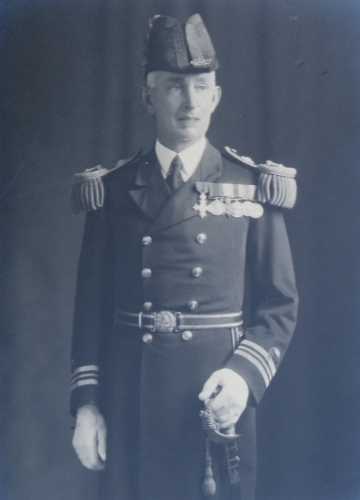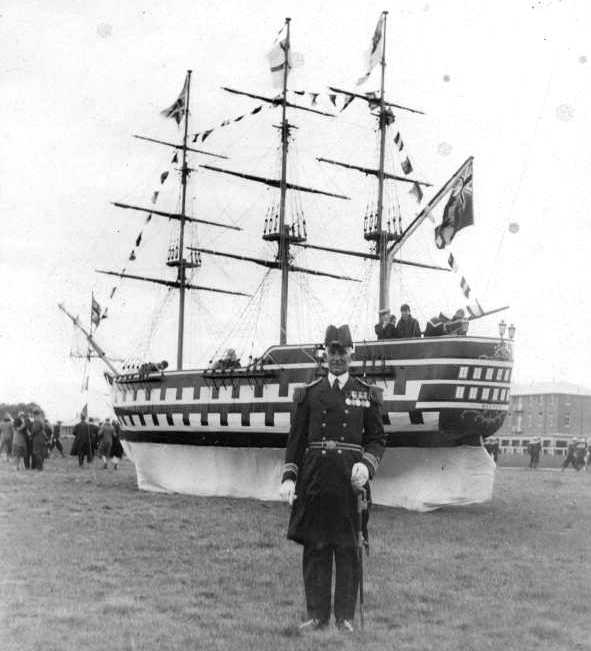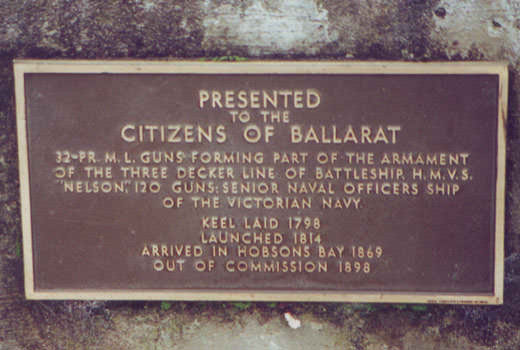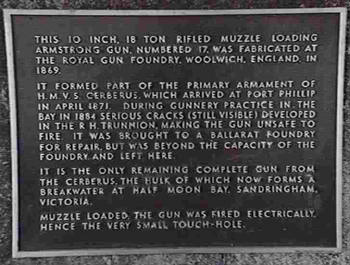George Prideaux
Armourer
 Ordnance Lieutenant G. Prideaux, MBE RANPhoto courtesy of the Museum of HMAS Cerberus. Ordnance Lieutenant G. Prideaux, MBE RANPhoto courtesy of the Museum of HMAS Cerberus.
George Prideaux was born July 18th 1872 at Williamstown.
George Prideaux was 17 when his father died in 1899. The following is directly from the book PRIDEAUX A West country Clan by R M Prideaux published by Phillimore & Co. Ltd in 1989 ISBN 0 85033674 0
‘During the war of 1914-18 when he met my father, George was a devout Methodist who used to used to organise services aboard ship on Sundays. But some time after his return to Australia he abandoned Methodism for Humanism, eventually becoming the president of the Rationalist Press Association after his retirement with the rank of Ordnance Fleet Commander and an MBE. He was a champion rose grower and managed to have the wasteland of the Flinders Naval Depot transformed into what has been named the Prideaux Rose Garden. His sister has deposited with Melbourne University a collection of material dating back to the last century, while George’s diary and medals are in the National War Museum. During the war of 1939-45 Jessie spent 5 years in the Cypher Room at the Navy Office and twice a year accompanied her brother to those Government House Balls to which naval officers were invited.’
(Jessie was George’s younger sister who lived to be well over 100)
PRIDEAUX A West country Clan, by R M Prideaux, Phillimore & Co. Ltd in 1989 ISBN 0 85033674 0
(information supplied by Leigh Prideaux)
Webmaster: George Prideaux'a medals and diaries are not held by the Australian War Memorial or the Imperial War Museum.
Early Impressions of the Victorian Naval Forces
By Lieutenant G. Prideaux, M.B.E., R.A.N.
Spindrift October 1930
Without having access to any official documents, I shall endeavour to place before the readers of "Spindrift" an idea of what the Navy was like away back in the 80's, at the same time asking them, with their knowledge of wireless, signals, modern torpedo and gunnery, not to be cynical of the efforts of those far back days; for they were just as up-to-date in their day as you are in these days. Life is evolution and progress, and each decade adds its quota to the sum of human knowledge
In 45 years time the men of the day will smile at our efforts of the present day -- there is nothing surer than this.
I joined the Victorian Navy in 1885, as an Armourer's apprentice, when the whole of Australia was deeply agitated over the Russian War preparations. It was a time of great activity in Naval circles in Victoria.
We had then the "Nelson," one of the old wooden walls of England as Flagship, the "Cerberus," a modern ironclad, mounting 4 18ton guns, throwing projectiles of 400 lbs., the gunboats "Victoria" and "Albert." the "Victoria" carried a 10in. B.L. gun and the "Albert" an 8in B.L.

Commander Prideaux standing in front of the model of Nelson that, according to the AWM, he made in the 1930's.
The "Victoria's" gun was found to be of too heavy a calibre for the ship, so was removed and placed in the Eagle's Nest fort at Port Phillip Heads, for the defence of the port.
There were also three torpedo boats, the 1st. Class T.B. "Childers" and 2nd Class T.B. "Nepean" and "Lonsdale." The "Childers" put up a world's record -- in those days -- by making the journey to Victoria under her own steam. There was also the "Gordon," a vessel resembling the modern steam pinnace and fitted with dropping gear each side to carry two torpedoes.
Later, about 1890, there were added to the fleet the "Countess of Hopetoun." The latter sailed out round the Cape of Good Hope, making the journey a non-stop one as the Captain was afraid, if he put in at the Cape, his crew would desert. The journey took six months to complete.
During the Russian War scare the Government purchased two sailing ships - the "Chusan" and the "Formosa"- which were stripped of everything and made ready for sinking across the entrance to the channel leading to Melbourne, to prevent the Russian ships from reaching within gunshot of the city.
The Melbourne Harbour Trust had two hopper barges, the "Batman" and the "Faukner," and the tug-boat named the "Gannet." Forward on each of these vessels was fitted a 6in. B.L. gun on Vavasseur mountings. It was part of my weekly duty on Friday and Saturday mornings to give these guns their weekly overhaul.
The Victorian government of those days had the same scheme for the loan of Officers from the Royal Navy as at present.
The first Officers I served under were Capt. A.B.Thomas, Commander Muirhead Collins, afterwards Sir Muirhead Collins, Secretary for Defence and Secretary to the High Commissioner in London. My first Gunnery Lieutenant was Lieut. A.H. Christian, the Torpedo Lieutenant being Lieut. Heath. Both these officers reached Admiral rank, Admiral A.H.Christian being second in command of the Gallipoli operations, and Admiral Heath being Admiral Superintendant of Portsmouth Dockyard.
When Admiral Christian received his C.B. I wrote and congratulated him, receiving in reply a very fine letter in which he reviewed his period of service in the Victorian Navy and the efficency of the Gunnery Dept. for the period in which we jointly served. He paid a glowing tribute to the Anzacs at Gallipoli, his own words being "they were the finest and bravest soldiers that set foot on the Peninsula." This letter I intend later on to present to the War Museum at Canberra.
Lieut. Heath, during his two year service, married the daughter of a very wealthy Riverina Squatter. The wedding took place at St John's Toorak, and the whole Victorian Navy were invited to the residence of the bride's parents in Toorak after the ceremony. At the church we unharnessed the horses - no motor cars in those days - and with drag ropes from the field guns dragged the happy couple through the streets. In the grounds of the home huge marquees had been erected for the entertainment of the troops - the tables simply groaned under the weight of champagne, wines, etc.
Was there ever such a wedding?
There can be no doubt about the quality of the Officers lent to the Colonial Forces in those days. Coming straight from their Courses at the Gunnery or Torpedo Schools; they were the last word on the subject. Nearly all of them reached Flag rank, amongst them being the following: Admiral White, Admiral A.H. Christian, Sir R. Heath, Sir George Neville, Sir Muirhead Collins, Admiral Pelham, Capt. De Courcy Hamilton (afterwards Chief of the London Fire Brigade), and Admiral Mann.
Whilst at Whale Island I called on Admiral Sir H. Heath and had a very interesting chat with him in his office in Portsmouth Dockyard. He spoke of his wonderful two years in the Victorian Navy, and said he had enjoyed every moment of his time here.
The event of the year was the Annual Manoeuvers at Easter, when the whole of the naval forces were mobilized. The Naval Brigade, under Capt. Robert Fullarton, embarked. They were about 200 strong and for the short spell afloat brought enough kit to last the present day seaman a two year's commission. On leaving for the shore again their kit bags were much reduced in bulk, and I fear the major part of their kit consisted of "eats and drinks," for the ship was very crowded, and at meal times 'twas a scramble to obtain a seat at the table, many eating meals sitting about the mess decks.
There was a gradual working up to this,These Annual Manoeuvers were taken very seriously by the authorities- the "Nelson" and "Cerberus" carried representatives from each of the daily papers - Argus, Age, and Herald - and a great deal of space was allocated in describing the events. The reporters were the Wardroom guests and a great holiday it was for these gentlemen.
Sub-calibre firing in those days was quite a different operation to that of today. Being muzzle loading guns, great iron bands lined with leather had to be bolted round the outside of the muzzle end with clamps for securing the Martini Henry rifle on top. They were lined up from the tangent sight of the gun to the vertical groove on the face of the gun. With firing these bands would work loose at times and required constant attention in lining up. The target was a moored buoy, the ship steaming round it.
The Torpedo attack at night was considered one of the principal events of the week. The "Cerberus," "Victoria," and "Albert" were the only ships fitted with searchlights, the "Nelson" never having been so fitted.
In repelling torpedo attack, the turrets were manned and the guns loaded with blank charge, as were also the 6 pounders on the flying deck. The remainder of the crew were placed all round the ship's side, armed with rifles and blank ammunition.
Every eye was strained to catch the first sight of the Torpedo fleet. In most cases the attack was successful, as the 2nd Torpedo Boats had very little freeboard, and were well suited for harbour defence work.
The great event of these manoeuvers was the Battle practice on the last day.There was a gradual working up to this, and great rivalry between the four gun's crews. There was no Director firing carried out in these firings, each gun firing in succession.
Commander Collins did once carry out firing by a system of Director firing from the Conning Tower, from which position voice pipes led to each gun. This neccessitated four persons being in the tower to shout order to fire into the four pipes. I was at one of the voice pipes. This was the only occasion on which the four guns were fired simultaneously and the result to the ship was disastrous.
The deck planking burst away from the deck, the steel plates round the hammock netting broke away from the angle bars to which they were secured, rivets were loose and broken in many places, men on the flying deck had their caps blown off their heads, overboard, and the boats at the davits had their planks opened.
Thus ended Director firing in the Victorian Navy in the 80's.
The range usually used in these firings was anything between 1,800 and 2,200 yards, the target being moored and the vessels steaming at about 10 knots on a straightcourse. Often trophies would be donated for competition between Permanent Naval Forces and the Naval Brigade.
The Silver Cup at present in the Wardroom at F.N.D. was presented by Sir W.J.Clarke and won by the Permanent men at one of those firings.
A few words about the guns.
When the turrets were manned there was very little more room than in the turrets of our two modern cruisers, the "Australia" and "Canberra."
The recoil system was a series of plates fitted under the carriages and worked by a compressor wheel on the side of the carriage. When the gun recoiled the compressor wheel number had to run back with the gun, all the time putting additional compression on the plates, and so bringing the gun carriage to rest at the buffer stops without undue jar on the buffers.This required a well trained man, and it was surprising how gently he could bring the carriage to rest. After firing, the guns had to be lifted, and the trunnions examined.
A hydraulic pump was fitted to each gun for this purpose. It was my job to lift these guns after firing, and after one firing I discovered one of the trunnions hanging by only about one third of the metal. They were nearly 12in. in diameter.
A very narrow escape from a very serious accident was thus averted. The roof of the turret had to be taken off and a new gun procured from Hong Kong Dockyard.
This disabled gun is now in the Ballarat Botanical Gardens. On visiting these gardens some years ago, the Curator asked me if I could give him any information about the guns around the garden as all records of them had been lost. The supposition was that the big gun came from the Rock of Gibraltar, and the 64 pounders were from the Crimean War. I showed him the fractured trunnion of the "Cerberus" old gun, and informed him that the 64 pounders were from the armament of the H.M.V.S. "Nelson." I engraved two plates setting forth those facts. This serves to show how easy it is for things of historic interest to be lost sight of.
Brass Plates referred to in the above text.
 
Webmaster's Notes
-
There were numerous occasions when broadside or director firing occured from 1888 until 1905.
-
The Cerberus brass plate above is incorrect when it states that the damaged gun is the last one from Cerberus. There were four on the ship until March 2005.
-
The Cerberus log recorded that J. White, armourer discovered a fracture in the right trunnion on 16 September 1897.
-
Nelson arrived in Victoria on the 4th of February 1868, not 1869 as stated on the brass plate.
Excerpts from George's diary appear in Deeds not Words, Wilson P. Evans, Hawthorn Press, Melbourne 1971.
|
Religion
|
Height
|
Chest
|
Build
|
Hair
|
Eyes
|
Tatoo
|
Comment
|
| Prot |
5' 9" |
38" |
Prop |
Dark |
Hazel |
|
spots left arm |
From Volunteer Listing kept by CPO Goding & held by grandson Lawrence Dilks, Williamstown. Compared with China Contingent List. Prepared by Ada Ackerly, Directory Williamstown Museum, c 1987.
Profile in The Australian Illustrated Enclclopaedia of The Boxer Uprising 1899-1901, Justin Corfield, Slouch Hat Publications, McCrae Australia, 2001.
More details on this person can be found in the Victorian Navy Certificates of Service This is a very large pdf file of 109 mb and takes 13 minutes to download with a 1.5 mbps internet connection.
George Prideaux's Recollections as published in The West Australian, in 1937. | 
